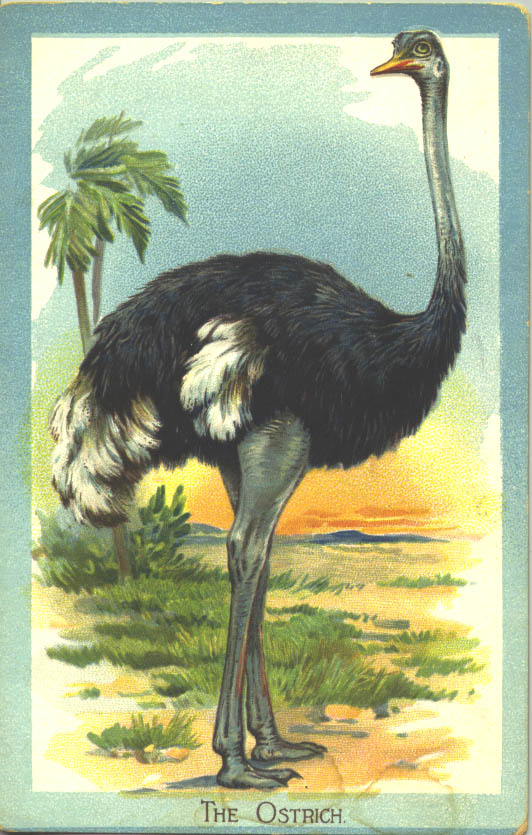
One of my early interests in postcards was ostriches. To this day I cannot tell you why, but I know I found the history of the ostrich in the United States to be interesting. Here’s the story.
In 1881, Mr. Edwin H. Cawston leased the Swedish steamship Krona and went to Natal, Brazil, where he bought fifty-two full grown ostriches for $6,000, a tidy sum in 1881. Several hundred tons of sand was put into the hold of the ship for the birds to stand on and possibly feel at home. Also, fifty-two pens were erected and padded in order to protect the birds in rough seas.
Also taken aboard were four tons of corn, two thousand cabbages, forty sacks of sweet potatoes, a ton of pumpkins, carrots, and beets to feed the birds on their long journey. The birds were brought aboard blindfolded. Many got seasick and refused to eat, but a little forced-feeding brought them around.
When the Krona arrived in Galveston, Texas, only forty-four birds remained. From Texas, the birds were shipped to South Pasadena, California, where they lived and thrived in a semi-tropical park.

The purpose for the birds being brought here was for their beautiful feathers! The feathers were nearly worth their weight in gold, as millenary fashion of the day included fancy feathers. The feathers were sorted by color, length, and width and were dyed multicolor by two German dye-masters who emigrated especially for the job. Their work was done in secret. In 1902, the farm received 60,000 orders for ostrich feathers from their published catalogue.
Some years later women’s styles changed (no thanks to Charles Dana Gibson and his Gibson Girl styles) and the demand for ostrich plumes all but disappeared. The farm did continue to exist and prosper as a sightseeing must, but in 1934 it closed down with only a few birds left. The land was subdivided for homes and industrial buildings.
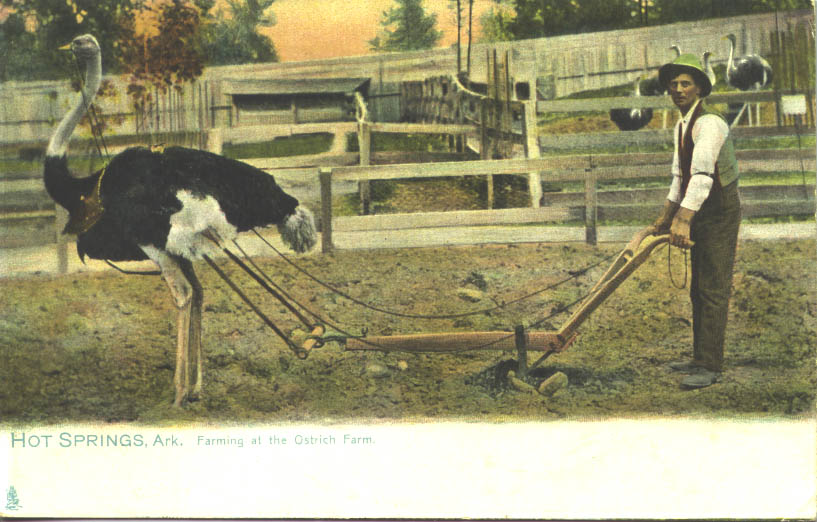
Ostriches are prolific. In a few years Cawston had over three thousand birds. His farm was well publicized the world over and was the object of much curious and admiring attention.
In 1911 Cawston sold the farm for $1.25 million and later moved to England.
To remove the tail and wing feathers the birds were usually blindfolded. The claim was that removing the feathers did not hurt the bird and the feathers would grow back in about ninety days. Other large American ostrich farms were in Arkansas and in Jacksonville, Florida. The largest of all, however was in South Africa.
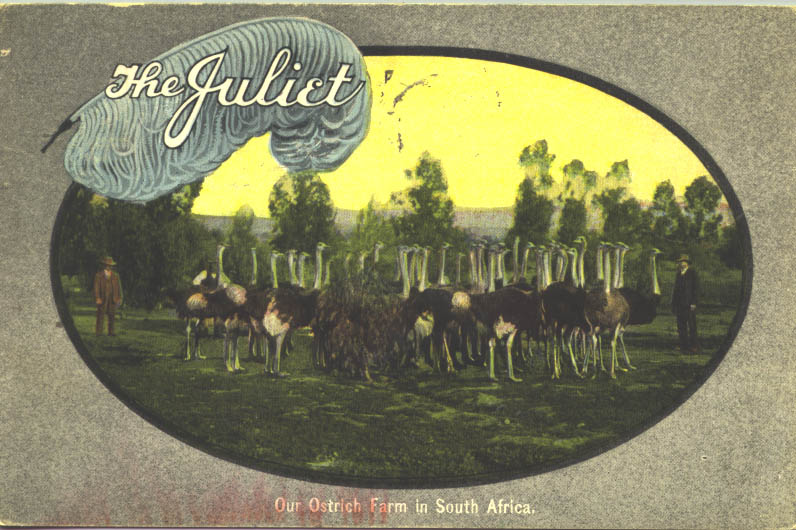
When the farm was a frequent tourist attraction, it was always a guest favorite to ride in an ostrich-pulled wagon. Sometimes tourists could even ride the birds bare-back, like a horse, complete with bit and bridle. Farm visitors were always warned to remove their rings, watches, and other shiny objects because the birds were always attracted to such items and they would pluck and swallow the objects.
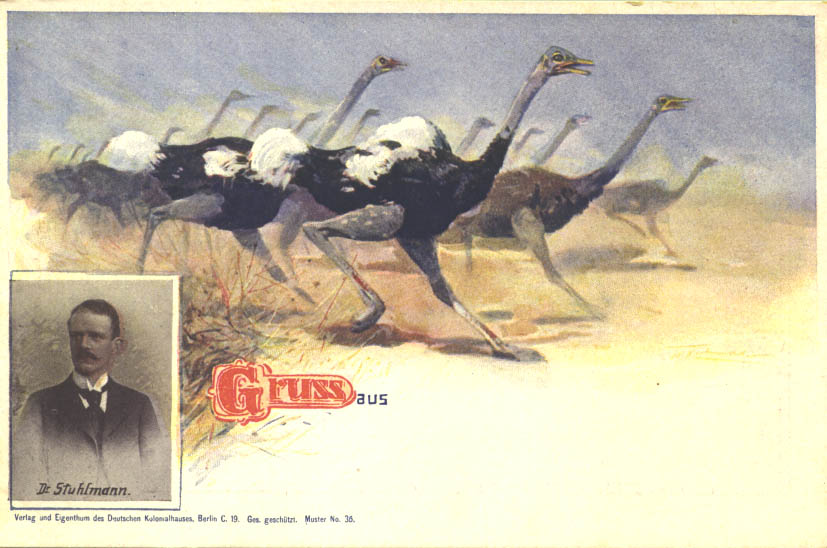
I have about 450 cards in my ostrich collection. One of my favorites is this one: a Gruss aus card showing ostriches on the run and with an insert photo of a Dr. Stuhlmann..
I was most surprised to learn that full grown ostriches can run up to sixty miles per hour.
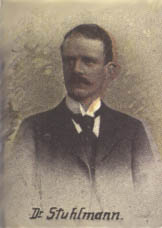
It was extremely difficult to find a biography of Dr. Franz Stuhlmann, but I did learn that he was, throughout the last decade of the nineteenth century, very much involved in research concerning the legend and lore of zoological knowledge on the scientific communities of the Middle Ages. His research took him on several visits to central Africa. He is known today for his discovery of Stuhlmann’s Starling and his research on flightless birds.
This article appeared in an earlier form in the South Jersey Postcard Club’s The McClintock Letter of October 2003, page 6.
I remember John from the many postcard shows he set up at back in the 80s and 90s. He always had a wonderful selection of postcards. When shows opened shoppers flocked to his tables because not only did he have great cards they were normally the least expensive in the room. He and his wife were always very cheerful and friendly. He made you feel like family.
Great article! Thanks! Wish I had met John !
I remember when ostrich meat was supposed to be the next big thing and ostrich farms started proliferating about thirty years ago. Wonder if any postcards were issued by such enterprises.
I believe I have a few if interested